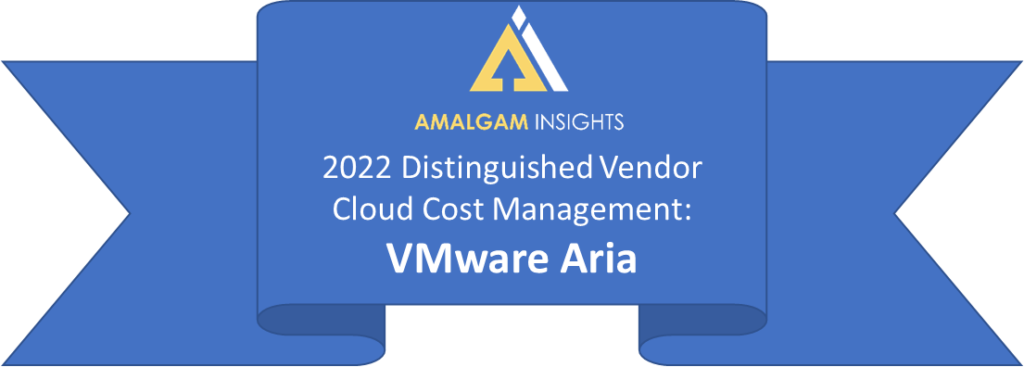As we’ve noted throughout our series on cloud cost and optimization management, choosing a vendor for this practice is no easy feat. A number of companies provide software and services germane to making the most of cloud environments — it’s tough for organizations to sift through all the marketing messaging. Amalgam Insights has taken on much of that footwork on behalf of enterprises, and we continue to present our findings in our series, which includes vendor profiles published in no particular order. This second profile looks at Spot by NetApp.
WHY SPOT BY NETAPP (INCLUDING CLOUDCHECKR) FOR CLOUD COST AND OPTIMIZATION MANAGEMENT
- Continuous cost optimization, not just one-time, across public clouds
- Automated platform that reduces burden on operations personnel
- Includes development, finance, security, and cloud operations based on both in-house development and acquisitions
ABOUT NETAPP
NetApp is an Amalgam Insights Distinguished Vendor for Cloud Cost and Optimization Management. Founded in 1992, NetApp has grown from a premises-based provider of computer storage to its current iteration as hybrid cloud data services company. As of 2021, NetApp employed 10,500 people around the globe, across all of its divisions. The company reported $5.74 billion in revenue in 2021. In 2020, NetApp acquired Spot to gain cloud cost optimization capabilities and enter the cloud cost market. In 2021, NetApp bought cloud financial and operational optimization vendor CloudCheckr, adding those capabilities to its Spot by NetApp portfolio. CloudCheckr reported more than $4 billion in cloud spend under management when NetApp acquired it. NetApp’s cloud cost control and optimization offering targets midsized and large enterprises seeking to optimize cloud costs scaling up to Fortune 500 firms.
NETAPP’S OFFERING
The Spot by NetApp portfolio brings together a variety of organic and acquired capabilities to create a platform that gives professionals in development, security, finance, and cloud operations holistic, cross-departmental insight. The acquired companies include cloud optimizer Spot and cloud cost management solution CloudCheckr. Spot brings expertise in managing containers such as Kubernetes, which can rack up cloud costs quickly. CloudCheckr offers the visibility and governance around cost and security, including the allocation and chargeback of cloud computing costs to specific departments.
Spot shows which aspects of the cloud environment need right-sizing with more than 600 best-practices checks around cost management, security and compliance, usage and performance, and availability. Spot sets parameters to implement and automate recommendations for procurement, finance, security, and IT to all share visibility to the organization’s cloud infrastructure (including containers, virtual machines, data and web applications, and micro-services).
Spot achieves this combination of operational and financial visibility by combining CloudCheckr with its already existing platforms: Eco (for finance), Spot Security (for security teams), Spot PC (for cloud operations), and Elastigroup and Ocean (for developers). CloudCheckr delivers the visualization capabilities and best-practices checks that help assure continuous optimization.
COMPETITION AND COMPETITIVE POSITIONING
The Spot portfolio competes most against do-it-yourself cloud cost optimization and management tools, as well as vendors including VMware CloudHealth and IBM Turbonomic. The company finds that it wins deals among customers seeking a combination of analytics, visibility, automation, and governance and security (via the CloudCheckr platform).
As such, the Spot by NetApp portfolio combines the functionalities that affect cloud spend and governance with process automation to support cloud savings. Furthermore, NetApp provides dashboards and report visualizations for greater collaboration among users.
NetApp goes to market through its direct sales teams as well as a large contingent of managed services providers (MSPs), many of whom came to the vendor through the CloudCheckr acquisition. Capabilities for MSPs include:
- Automation and streamlining of cloud services billing
- Ability to offer cloud desktops as a service
- Improved cloud security and compliance
- Ability to support a FinOps practice
- Reserved instances arbitrage, custom rates, and charges
- White-labeling for interface and reports
NetApp’s reference customers for cloud cost management include Samsung, HPE, IBM, University of Notre Dame, and Sony.
NETAPP’S PLANS FOR THE FUTURE
NetApp intends to keep growing its Spot portfolio. To that end, the company in spring of 2022 acquired Instaclustr, which offers a fully managed open-source database, pipeline, and workflow applications as a service. This purchase will bolster Spot’s capabilities to support cloud operations. NetApp also plans to continue building its MSP channel.
AMALGAM INSIGHTS’ RECOMMENDATIONS
Amalgam Insights recommends that organizations seeking financial and operational control of complex cloud environments consider Spot, either based on the scale of operations (typically $1 million+ annual spend), multi-cloud support, and the importance of cloud computing to the organization’s core operations. Developer teams or smaller organizations can also deploy Spot to target specific projects or workloads. The Spot portfolio, with its automation, workflow management, and analytics, offers insight into four key spend areas of operations — development, finance, security, and cloud. This breadth allows each group to gain visibility into other departments and to coordinate and align efforts to optimize cloud computing environments.
Need More Guidance Now?
Check out Amalgam Insights’ new Vendor SmartList report,Control Your Cloud: Selecting Cloud Cost Management in the Face of Recession, available for purchase. If you want to discuss your Cloud Cost Management challenges, please feel free to schedule time with us.



